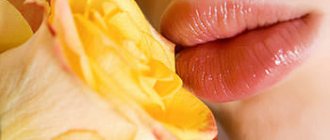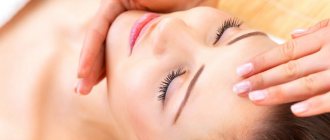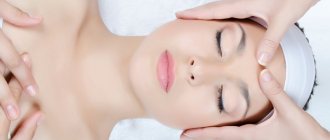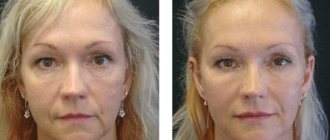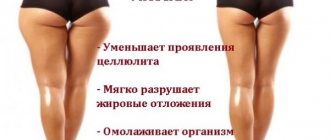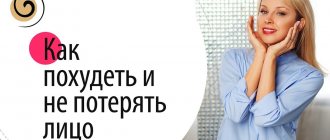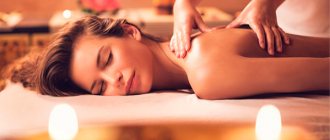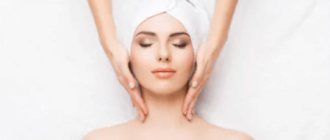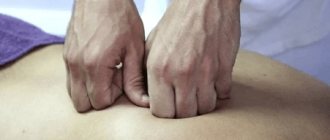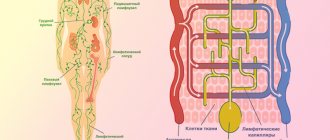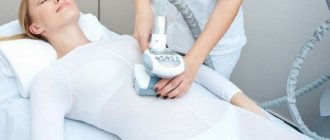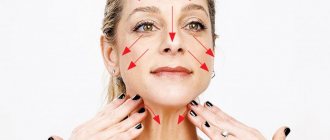The lower half of the face is the first to stop looking young. The skin sags (ptosis of the cheeks, jowls, swollen oval) and gathers in folds (nasolabial folds, “wrinkles of grief”, purse-string wrinkles). The lips lose volume and sadly droop at the corners.
But the advantage of these zones is that we can get to the problem from the inside through intraoral (intraoral) massage. It is also a buccal massage.
From the inside we tighten everything that is loose. Smooth out everything that has wrinkled. We “sculpt” clear and refined features.
Do you want to learn how to contour your face using intraoral massage? Read this article.
What is intraoral massage
Intraoral massage is a mechanical effect on the oral cavity using your hands (you can also use your tongue as a “massager”). Most often, this procedure is used for age-related deformations of the tissues of the lower half of the face.
The procedure gives a pronounced rejuvenating, tightening, sculpting effect.
First, let's figure out what we're fighting against.
Age-related changes in the lower half of the face
The lower third of the face ages quickly.
This is largely due to the increased activity of the facial muscles in this area. We chew, talk, smile, laugh all the time. All this leads to muscle hypertonicity and deterioration of the trophism (nutrition) of the skin.
Gravity also pulls tissue towards the ground.
We add provoking factors in the form of the sun, poor posture, bad habits, poor nutrition, physical inactivity, and hormonal imbalances. And here they are: sagging cheeks, jowls, a swollen oval, a double chin, nasolabial lips, “wrinkles of sorrow” (stretching from the corners of the mouth down to the chin), purse-string wrinkles, drooping corners of the mouth - everything that reveals age in a woman.
There is even a very common type of aging – deformation. With it, age-related changes primarily affect the lower half of the face. The tissues “flow” down, making the contour heavier and blurring and changing the geometry: the “triangle of youth” turns upside down.
What is the essence of buccal massage?
The term “buccal” is based on the word “bucca” (Latin – cheek). The massage is carried out with sterile gloves and includes two stages - working the muscles from the inside (buccal) and the outside (sculptural). As a result of the gradual implementation of the technique without surgery and injections, it is possible to achieve:
- stimulation of blood circulation;
- return of muscle tone, which is a kind of frame of the face;
- restoration of elasticity and color of the skin, reduction or complete disappearance of facial wrinkles of varying depths;
- reduction of subcutaneous fat deposits, with regular sessions - a visible effect in the fight against a double chin;
- elimination of disorders in the facial muscles after strokes and paralysis;
- relieving muscle tension.
The main features of this complex procedure:
- the session is carried out with the patient's mouth open;
- the procedure takes place in a medical room, the doctor wears sterile gloves;
- cheek massage is carried out from the outside and inside;
Is it possible to safely reverse the signs of aging?
It seems that ptosis (drooping) of the tissues of the lower third of the face is your death sentence? What kind of correction can there be? Age takes its toll, and you just need to come to terms with it, love yourself for who you are?
Of course, only you yourself are able to choose your life philosophy. But did you know that there is an effective way to combat age-related changes in the lower third of the face? Moreover, defects are eliminated safely, without injections, threads or scalpels. All you need to do is work regularly for 2-4 weeks.
Such a healthy way to restore tone and shape to tissues is massage with access through the oral cavity. And it’s even better to combine intraoral effects with traditional, external massage techniques, including using vacuum cans and a dry brush.
Taken together, these measures will give amazing results.
Lifting and sculpting is a niche not only for invasive cosmetology and plastic surgery. The same effect (and even better) can be achieved independently, using the activating power of massage, but without fear for health and aesthetic complications.
Rejuvenation without drug load, without muscle atrophy, without tissue necrosis, without neurological problems, without distorted and actively aging faces - this is possible.
How to prepare for a session
To achieve maximum healing effect and feel comfortable, it is recommended to follow several rules.
Namely:
- take care of hygiene;
- do not wear jewelry that may interfere with the specialist’s manipulations;
- give up perfume;
- eat no later than 1 hour before the procedure;
- Avoid epilation of legs and other areas on the eve of the procedure - massage oil can get into micro-wounds and provoke inflammation;
- if exposure is expected in the abdominal area, you need to eat no later than 3 hours before the procedure.
During the session, you need to relax as much as possible so that the massage therapist can work on the skin and muscles without encountering muscle resistance. After completing the procedure, you should lie quietly for several minutes.
Main indications for intraoral massage
Intraoral massage is suitable for you if you have:
- the cheeks sagged and the oval floated;
- soft tissues have become flabby and redundant;
- bulldog cheeks appeared;
- a double chin has formed;
- the lower part of the face became massive, the contour became “squared”;
- nasolabial folds have formed;
- “sorrow wrinkles” crawled down from the corners of the mouth (another name for these labiomental folds is marionette wrinkles);
- purse-string wrinkles have formed around the mouth;
- loss of volume in the lower third of the face: pursed lips, sunken cheeks;
- swollen and puffy face;
- problematic skin prone to rashes (acne, rosacea);
Why won't 1 exercise help you look younger?
What has been aging for many years cannot be corrected in one day. You start working with the body. As long as you work with the body, half of the problems on your face will disappear. And then we locally improve the problems on the face
What will you get in the course “I’ll rid myself of wrinkles?”
Buccal massage and other rejuvenating techniques give an excellent effect, and from the first time the difference between “before” and “after” will be noticeable, since the muscles (with the right influence) immediately respond to deep manipulations.
A forgotten “youthful” expression even appears on the face, and at the end of the course, you can observe a lot of positive changes:
- fine wrinkles disappear, and pronounced ones become less deep, nasolabial folds soften and decrease
- jowls decrease and disappear
- The oval of the face becomes clearer, the corners of the lips rise
- pastiness disappears, lip volume and fullness return
- Increased elasticity, smoothness and radiance of the skin
Interesting?! It’s better to try and start looking younger right now!
Cheeks and lips – why do they need intraoral massage?
To understand how intraoral massage works, let's first look at the anatomy of the oral cavity.
In general, this procedure in its “maximum configuration” involves working on the entire oral cavity, including its posterior internal part: the hard palate, gums, salivary glands, genioglossus and geniohyoid muscles. We will explain why this is necessary in one of the following chapters.
For now, let's focus on the cheeks and lips. They are the ones you need to influence first if your task is to prevent or combat age-related changes.
Cheeks and lips are unique parts of our face because we can massage them not only from the outside, but also from the inside. Take advantage of it!
What is a cheek? On the outside is the skin, on the inside is the mucous membrane, and in the middle is the buccal muscle, which is covered by the buccal-pharyngeal fascia. And we have the opportunity to immediately reach this muscle-fascial “filling” from both sides, also capturing the masticatory muscle.
Why do we need this? Then, it is precisely from myofascial changes that all our main markers of age appear. The muscles are overstrained and shortened, the fascia has lost flexibility and mobility. What is the result? Flabby and “excess” skin, ptosis (drooping) of the cheeks, jowls, nasolabial lips.
We use deep, myofascial massage techniques from the outside and from the inside - we unwind all this tense, constrained and saggy structure back.
The same is with the lips (we are talking not only about their red part, but entirely about the musculocutaneous folds that go from the base of the nose to the chin-labial groove and on the sides to the nasolabial folds).
What is on the lips between the skin and the mucous membrane? The orbicularis oris muscle and labial fascia, and we can influence them not only from the outside, but also from the inside. We knead the myofascial layer, restore its elasticity and mobility, and all our purse-string wrinkles, nasolabial folds, and “wrinkles of grief” go away. Lips straighten and become plumper.
The depressor muscles, which lower the corners of the mouth, also get their share of the “double blow”. We relaxed them - raised the corners of our lips and returned a satisfied expression to our face.
Using taping to improve the results of massage
If there is a risk of a child being bitten, the taping method is a great help! In addition to the fact that tapes perfectly normalize muscle tone, they improve their innervation and promote proper muscle movement.
The method is quite young, but has already proven itself well. It is absolutely physiological, which is especially important because not a single drug will improve the quality of muscle movement. And also, using tapes, the quality of articulatory gymnastics, as well as the quality of chewing and speech, significantly improves!
Examples of practical work on how massage helped a child
There was a wonderful case when, after another session of massage and taping, and it should be noted that the child did not allow massage in the oral cavity for a long time, the mother decided to play with him before bed. She showed how she puffs out her cheeks and the child unexpectedly repeated. But he couldn’t get this action from words at all. And so, during the game, he suddenly puffed out his cheeks! Sleep that evening was canceled and the mother recorded videos of her son puffing out his cheeks and how he did it again and again. The boy went to bed, and my mother corresponded for a long time with me and the specialists who are working with him! Isn't it a miracle?
If you are a specialist and have not yet mastered the technique or want to improve your skills, then we invite you to our online workshops!
You will learn to use taping and magnetic taping for various speech therapy problems, complement your practice with taping techniques and include magnetic therapy in your toolkit!
Participation in the online workshop is free.
Also subscribe to our YouTube channel, where Elena Zaitseva shares useful videos with subscribers! We invite you to watch a video about how taping the cervical spine helps in correcting speech problems!
If you are excellent at massage, but want to get high-quality, but faster results, then the taping method is the very method that will allow you to achieve good results in a short period.
Many specialists have already become convinced of the effectiveness of taping, because the results can not only be seen, but also heard even after one procedure! Therefore, if you want to master the taping method and help your patients, yourself and your loved ones, then this is easy to do by signing up for the online course “Taping in Speech Therapy”. You can evaluate the results after just one procedure. The taping method is physiological and allows you to restore functions in a short time!
The course consists of short lessons that cover the most common speech problems. You will not have problems mastering the material. There is a lesson for every problem. The course also provides for checking all homework and feedback from the teacher, which allows you to complete the applications absolutely correctly!
Operating principles
Intraoral massage reverses the processes that led to age-related changes. This procedure:
- removes obstacles that cause the face to age: muscle tension, lymph stagnation, slow blood flow;
- improves the condition of muscles, skin, blood vessels, nerve endings;
- restores the functional activity of tissues.
We work deeply, on several levels:
- Muscles
There is an impact on the facial muscles: the orbicularis oris muscle, the muscles of the zygomatic and cheek areas, the depressor muscles that pull the corners of the mouth down. The general muscles are also worked out: chewing, genioglossus, geniohyoid muscles.The muscles undergo a deep relaxation procedure, due to which their spasticity and spasms are reduced to nothing. The muscles regain their natural length and elasticity, muscle tone is normalized, and myofibrils (parts of muscle cells that are responsible for contraction) are restored. Adhesions are eliminated, scars are resolved.
- Fascia
Fascia is a case for our muscles, on which the shape of tissues and the condition of the skin depend. Deep treatment of the cheeks and lips helps restore flexibility and mobility to the fascial network. - Skin
Although the main effect comes from the inside (through the mucous membrane to the muscles), it also reaches the skin. By relieving muscle spasms, restoring blood circulation and trophism, the integument is transformed and renewed. The synthesis of collagen and elastin increases. The keratinized cells of the epidermis go away, which activates skin renewal. - Blood circulation
Blood flow and microcirculation are restored, blood vessels are strengthened. Thanks to the blood flow, the cells are saturated with oxygen and nutrients. - Lymphatic
drainage The lymphatic pathways are cleared, fluid stagnation and “blockages” are eliminated, and swelling is relieved. Lymph flows faster, and along with it, toxins and metabolic end products are more actively removed from the body. - Joints
The function of the temporomandibular joint is restored.
Properties and types of plastic massage
There are the following subtypes of plastic massage:
- Plasticizing. Prescribed to patients over 30 years of age, when the first signs of age-related changes begin to appear. The technique involves the use of intense pressure without rubbing. The peculiarity of this procedure is that the intense effect is exerted not only on the surface of the dermis, but also on the subcutaneous fatty tissue. Plasticizing facial massage consists of the following techniques: vibration, pressure, pinching, and treatment of biologically active points. Properly performed movements contribute to deep development of the facial muscles, activation of blood circulation and lymph flow. In terms of effectiveness, this type of plastic massage is comparable to a non-surgical facelift.
- Myoplastic. Aimed at deep treatment of soft tissues in order to relieve muscle tension, normalize blood circulation and lymph flow, soften and reduce compacted destructive tissues: fatty, fibrotic, sclerotic fibrous connective tissue. Properly performed manipulations help improve cell nutrition and respiration. Myoplastic facial massage promotes the activation of regenerative functions and increased production of collagen and elastin proteins. After a course of procedures, the facial contour is restored, tissues are stimulated and renewed, the skin looks younger, refreshed and healthier.
Upon completion of the course of plastic massage, the effect will be noticeable to the naked eye:
- increasing firmness, elasticity, skin tone;
- disappearance of the double chin, jowls, correction of the oval of the face;
- smoothing of facial wrinkles and pronounced folds;
- narrowing of pores;
- elimination of puffiness, bags and dark circles under the eyes;
- disappearance of age spots and stagnant spots;
- reduction of acne;
- relaxation of facial muscles;
- lifting of eyelids and brow ridges;
- normalization of the sebaceous glands;
- slowing down the skin aging process.
Effect
The result will be noticeable after the first procedure. If you do it regularly, you will be able to:
- Achieve a noticeable lifting of the lower half of the face, tightening the cheeks.
- Become a “sculptor” of your face and “sculpt” a clear contour without jowls and extra chins, turn the “triangle of youth” upside down.
- Smooth out perioral wrinkles, nasolabial folds, “wrinkles of sorrow.”
- Raise the drooping corners of your mouth.
- Relieve swelling and even out the relief.
- Make the skin cleaner, brighter, get rid of the gray tint, return a healthy color - all thanks to detoxification (toxins will leave along with stagnant lymph) and improved microcirculation.
- Increase skin elasticity and turgor, eliminate sagging.
- Restore volume to lips.
Plastic facial massage
Facial massage is performed according to medical indications. Therefore, before starting the procedure, the cosmetologist will conduct an initial examination, which will help assess the condition of the skin, draw up a plan of procedures, and determine the duration of the course. Indications for the procedure:
- blurry oval face;
- loss of firmness, elasticity, density;
- dryness, peeling, thinning of the skin;
- pronounced expression wrinkles;
- hypertonicity of the facial muscles;
- drooping of the eyelids, corners of the mouth and eyes;
- excess fat deposits on the face;
- prevention of gravitational ptosis and premature aging of facial skin.
Plastic massage has contraindications that must be excluded or confirmed by undergoing a comprehensive diagnostic examination. The technique is not prescribed to patients with the following pathologies:
- damage to the integrity of the skin, extensive acne, ulcers, erosions;
- acute dermatosis;
- allergic or herpetic rash;
- diseases of the hematopoietic system;
- abundant facial hair;
- inflammation of the facial nerve;
- papillomas, warts, large moles in the areas of manipulation;
- oncological tumor;
- respiratory diseases, accompanied by fever, cough, runny nose and other characteristic symptoms;
- fragile vessels;
- inflammation or enlargement of lymph nodes.
The stages of plastic massage include preparation, massage and care after completion of the procedure:
- Preparation. Before starting massage manipulations, the massage therapist cleanses the facial skin of decorative cosmetics, dirt and dust. Then the face is steamed and treated with talcum powder.
- Carrying out a massage. First, the facial muscles are warmed up. To warm up muscle tissue, superficial and deep kneading is performed using back-and-forth movements. Next, the cosmetologist begins to create a plastic effect. Manipulations are carried out according to a clearly defined scheme. At the end of the line, the movements are fixed with a pressing touch. The massage ends with pleasant, relaxing strokes.
- Post-procedure care. To enhance the effect and soothe irritated skin, apply a caring mask to the face.
Session duration is 20 – 25 minutes. After the procedure, you must use care products selected by a cosmetologist taking into account your skin type and indications.
Why do they do it?
In addition to rejuvenation, intraoral massage can also solve therapeutic problems. He helps:
- activate the blood supply to the gums and improve the condition of the teeth (due to the effect on the gums);
- improve articulation (by working out the articulatory muscles);
- reduce pathologies of the muscles of the speech apparatus, including paresis, paralysis, convulsions, involuntary movements;
- reduce pain when chewing, swallowing, snoring, eye pathologies;
- improve memory, hearing, respiratory function.
This therapeutic effect is possible due to the fact that the procedure activates the movement of blood and lymph, relieves muscle spasticity, and also stimulates biologically active points.
It is believed that the oral mucosa has its own “representation” of different organs and lymph nodes. By massaging these points, we activate reflex connections with them.
What methods of influence will the massage therapist use?
Medical massage includes many techniques and methods. The nature of the effect depends on the patient's medical history and condition. For example, procedures after an injury can be combined with cold exposure - this helps relieve swelling and increase joint mobility. However, several types of medical massage can be distinguished:
- Classic . Performed using oil, it is based on the use of basic massage techniques. The nature of the movements is stroking and rubbing.
- Spot . The specialist acts on certain points with his fingers or elbows. By pressing on a bioactive point in the body, certain centers responsible for pain and regeneration processes are activated.
- Periosteal . Necessary for diseases of the musculoskeletal system, which are closely related to pathologies of internal organs. Massage improves lymph flow and blood circulation, helps relieve pain.
- Connective tissue . The massage is aimed at improving the functioning of the ligaments. Due to this, you can get rid of pain, reduce swelling and stiffness, and restore joint mobility.
- Reflex . The technique is based on the idea that the human body is a complex self-healing system in which all elements are closely connected. Exposure to certain areas gives a response, and on the basis of this a conclusion is made about a possible dysfunction of the organ. With the right technique, neurological diseases and various diseases of the internal organs can be cured. The methodology of this type of massage is considered one of the most difficult because it requires specific knowledge from the field of neurology.
- Hardware . Based on the use of special equipment. The impact can be due to ultrasound, infrared radiation, weak electric shocks, etc.
The type of massage is selected individually; other physiotherapeutic procedures can be prescribed in combination.
